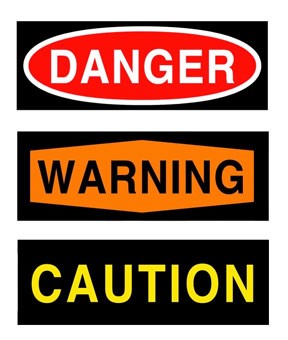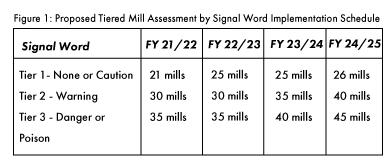
As we roll into 2021, attempting to come out of an economically devastating pandemic, the State of California is proposing to increase taxes, this time specifically on pesticides. In the proposed budget, the Department of Pesticide Regulation (DPR) is requesting $16.75 million ($8.25 million General Fund and $8.5 million DPR Fund) and 44 positions in 2021-22, and the California Department of Food and Agriculture (CDFA) is requesting $11.75 million General Fund in 2021-22, as part of a comprehensive proposal to support the state’s transition to safer, sustainable pest management.
Risk-based Mill Assessment
Additionally, DPR proposes to replace the current flat-fee mill assessment on pesticide sales with a risk-based tiered mill assessment, where higher toxicity pesticides are assessed a higher fee. Once fully phased in by 2024-25, the tiered mill assessment is anticipated to generate approximately $45 million in additional revenue annually to the DPR Fund. According to DPR, “The additional revenue will fund various DPR and CDFA programs and will increase support to the County Agricultural Commissioners (CACs) for local pesticide use enforcement activities to accelerate the state’s transition away from harmful pesticides.”
The tiered mill assessment will be based on a product’s “signal word” as determined by the United States Environmental Protection Agency (U.S. EPA) and will be phased in over four years, using phased down General Fund to support during this transition. When the tiered mill is fully implemented, products without any signal word or a “Caution” signal word will be assessed 26 mills; products with a “Warning” signal word will be assessed 40 mills; and products with “Danger” and “Poison/Danger” signal words will be assessed at 45 mills. The additional revenues will fund the following efforts:
Enhanced implementation of integrated pest management (IPM) practices, including:
DPR’s IPM Program ($8.25 million and 15.0 positions). In 2021-22, the General Fund will fully cover these costs; in 2022-23 $5.75 million will be funded from the General Fund and $2.5million will be funded from the DPR Fund; and the DPR Fund will fully fund these ongoing costs beginning in 2023-24.
CDFA IPM Research, Education and Extension Grant Programs ($3.75 million ongoing).This includes $2 million for Biologically Integrated Farming Systems and $1.75 million for Proactive IPM and IR-4 research. These programs will be funded from the General Fund in 2021-22, 2022-23, and 2023-24, and will fully shift to the DPR Fund beginning in 2024-25.
CDFA, through cooperative agreements with the California State University Agricultural Research Institute (CSU ARI) and University of California Agriculture and Natural Resources(UC ANR), to expand research, education and extension capacity for IPM ($8 million ongoing). In 2021-22 this will be funded from the General Fund; in 2022-23 $7 million will be funded from the General Fund and $1 million will be funded from the DPR Fund; in2023-24 $6 million will be funded from the General Fund and $2 million will be funded from the DPR Fund; and the DPR Fund will fully fund these ongoing costs beginning in 2024-25.
Strengthened DPR enforcement activities ($3 million DPR Fund and 18 positions in 2021-22 and ongoing).
Increased support to the County Agricultural Commissioners for local pesticide use enforcement activities from 7.6 mills to 10 mills (estimated to be an approximately $9.5 million increase).
Enhanced Pesticide Air Monitoring Network (AMN) ($4 million DPR Fund and 7 positions in 2021-22 and ongoing).
Increased community engagement by DPR, including with communities identified by the Community Air Protection Program (as authorized by Chapter 136, Statutes of 2017, AB 617)($1.5 million DPR Fund and 4 positions beginning in 2021-22 and $1.5 million DPR Fund and 7 positions in 2022-23 and ongoing thereafter.)
Sufficient revenues to repair the DPR Fund’s structural fund imbalance and provide a prudent reserve.

Adoption Schedule
If adopted, the tiered increase would be instituted as per the schedule in Figure 1.
This proposal causes many concerns especially for the tree nut industry, among others. While anyone in agricultural understands the need to transition away from pesticides, some activities, such as fumigation, are absolute necessities. Some countries require fumigation for products being imported regardless of need, like walnuts going to Korea. With the increased assessment on products with the “Danger” signal word, it will definitely, and unfairly, impact fumigants and commodities that are forced to use them.
Other areas in the proposal that do warrant some consideration include IPM research from state universities like Cal State University, Fresno and CSU Chico, and assistance from UC Cooperative Extension. But additional enforcement or ongoing monitoring when nothing has been found after years of monitoring is not justification to increase costs on growers already suffering from dropping commodity prices, especially following the pandemic. Agriculture cannot support the entire proposal, or even the majority of it for that matter. DPR should have considered discussing this with the agricultural community before slapping us in the face with it.















